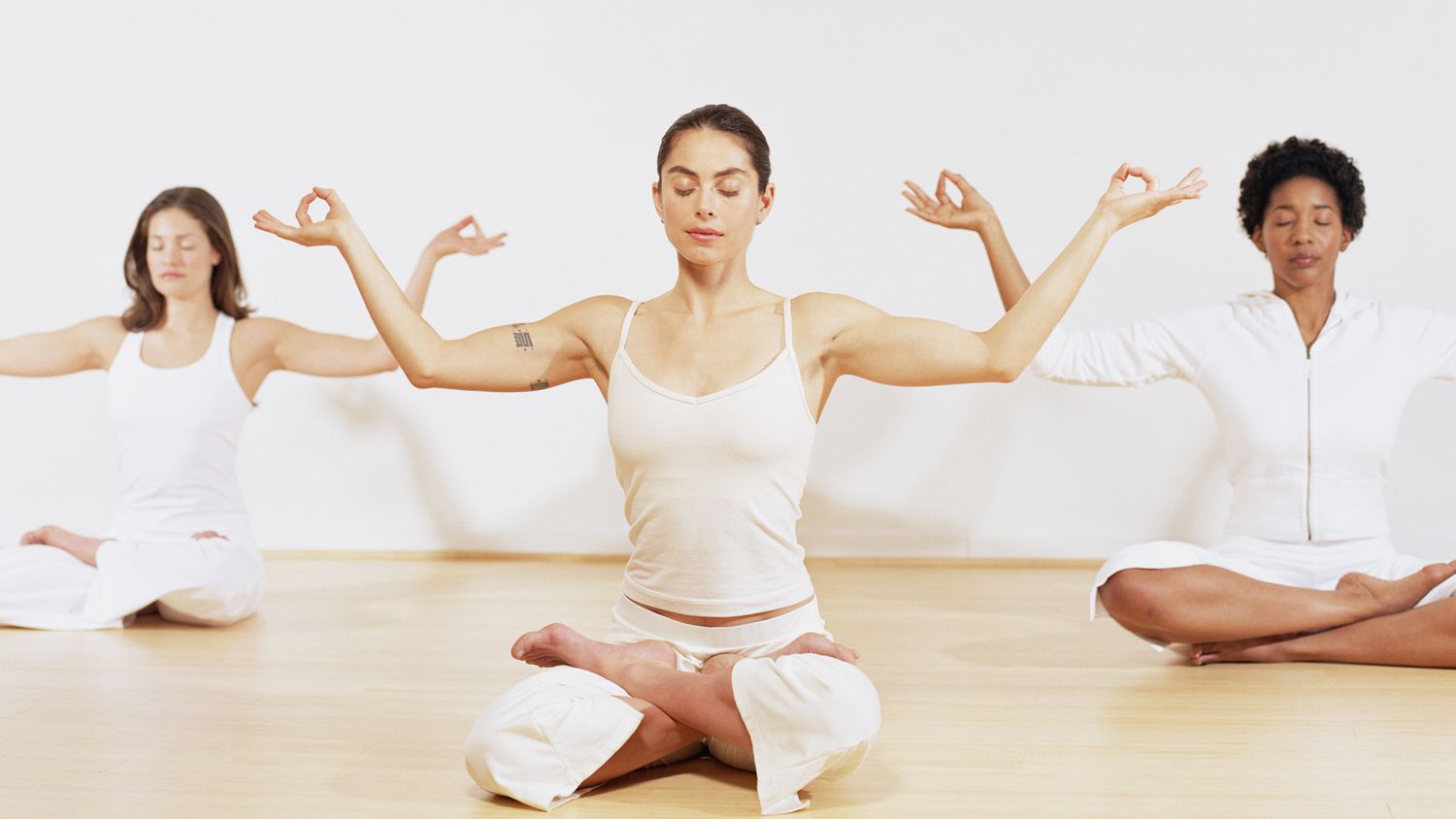When practicing meditation, focus your attention on a single object, image, or mantra. You can also focus on breathing. Deep, even breathing is one of the most important elements of this practice. It uses the diaphragm muscle to expand the lungs. You’ll feel calmer, and your muscles will be relaxed. This helps you concentrate. This type of meditation is best done in a quiet place where you don’t have many distractions.
Practice is key, and consistency is key. Even five or ten minutes a day can greatly benefit you. You might even consider meditating in the morning and again at night to find a more peaceful state of mind. The benefits of meditation and yoga are vast, and you may want to try them out for yourself. You’ll be surprised at how quickly they can bring you the peace you need. So take some time to learn the benefits of meditation and yoga. When done regularly, you’ll see that your life will become more peaceful and stress-free.

As part of your daily routine, you can choose to practice meditation by focusing on your breath for a few minutes at a time. When you get distracted, just remember to bring your attention back to the breath and gradually increase the amount of time you spend focused. There are many different types of meditation, so you can choose one that is best for you. The most important thing is to find what works best for you.
Yoga and Meditation Reduces stress
Yoga and meditation help reduce stress in a variety of ways. Both of these practices involve deep breathing, which can reduce cortisol levels in the body. Deep breathing also encourages mindfulness, which can be helpful for fighting stress. Yoga poses and exercises can also be beneficial for people who are suffering from chronic headaches. For more information, check out this article. It provides helpful tips on managing stress. Using Yoga and meditation regularly can have many benefits.
It has been found that prolonged exposure to stress can cause a host of physical, psychological, and spiritual health problems. Practicing yoga and meditation regularly may help people cope with these problems and overcome the co-morbidities associated with stress. Many people are now turning to these complementary and alternative medicine practices to improve their health and quality of life. Yoga has also been shown to be an effective way to deal with depression and anxiety. However, more research is needed to determine whether yoga is an effective way to reduce stress in the long term.

In addition to reducing stress, yoga can also help people sleep better and boost their energy levels. The forward fold can help people tune out the world and unwind. When performed regularly, this form of meditation can help people get a good night’s sleep. Overall, Yoga and Meditation can improve your mental state and overall health. Yoga and meditation help you create the mental patterns necessary to reduce stress and maintain a healthy life. However, there are some risks associated with meditation and yoga. Therefore, you should only do it when you’re confident that it’s a good fit for you.
Yoga and Meditation Helps release pent-up energy
If you feel like you have too much pent-up energy, yoga and meditation can help you. Yoga helps us connect to our emotions and release them. We all experience anger and frustration at times, but sometimes it can be helpful to release those feelings. You can do yoga as a way to relieve your anger. Here are some benefits of yoga. You will be surprised to learn that yoga can also help you release pent-up energy.
Research has shown that meditation has benefits for the developing brain. This has made educators interested in bringing yoga and meditation to schoolchildren, who face the usual stressors in school and also the stress of extracurricular activities. Many schools have begun incorporating yoga and meditation into their daily schedules. In San Francisco, for example, a twice-daily yoga and meditation program helped improve GPAs and reduced suspensions. However, more research needs to be done before this technique can be widely accepted by schools.

The practice of yoga and meditation is deeply connected. Both practices use breathing techniques to calm the mind and focus on yoga. The most common breathing technique used during yoga meditation is abdominal breathing, though some people use alternate nostril breathing before practicing yoga. Regardless of the method, inhaling and exhaling should be consistent and focused. A typical yoga meditation session lasts five minutes. Some people prefer to do yoga meditation before meditation, while others prefer to meditate first. Whatever your choice, yoga and meditation can help you release pent-up energy and relax.
Both meditation and yoga can help release pent-up energy for a more peaceful life. They help you become more present and calm your mind. Yoga helps you release pent-up energy in a variety of ways, including through meditation and by enhancing the third eye point. Regardless of your age or fitness level, you can incorporate yoga into your daily routine to release pent-up energy for a more peaceful life.
Yoga and Meditation Improves focus of mind
When practicing yoga and meditation, the body and mind can benefit from these practices. The practice of mindfulness can increase the body’s focus and awareness. In addition, it can improve the health of the central nervous system. The practice of yoga can also improve immune system function and focus. These are just some of the many benefits of yoga and meditation. However, combining them will help you get the most out of both techniques. But before combining these two, you need to know how they work.
For people who are unfamiliar with yoga, it is best to practice gentle poses. This is because the physical exercise helps clear the mind. A good yoga class can help you get started on the right foot. There are various online programs that offer lessons for beginners. In addition, mindful breathing exercises are great for clearing the mind. When done properly, breathing exercises reinforce the connection between the mind and body. Yoga can also help you focus better on your goals.

Yoga and meditation are both excellent ways to focus your mind and reduce stress. While they differ in many ways, they share many similarities, which make them equally beneficial for your overall health. If you’re looking for a quick fix for a stressful situation, you might want to try meditation. These exercises can help you achieve the ultimate goal of a stress-free life. You can try both of them and see which one works best for you.
Yoga and Meditation Reduces risk of heart disease
According to the American Heart Association’s guidelines, physical activity and meditation can lower the risk of heart disease. The research team focused on three elements: physical activity, meditation, and breathing. These three elements all positively affect the heart’s risk factors. The study participants engaged in yoga and meditation classes regularly, and the results showed that their blood pressure and BMI were significantly reduced. The research team is still investigating the exact mechanism by which these three components benefit the heart.
The study authors focused on various types of yoga and their benefits. These included gentle and more energetic forms. Participants in the studies ranged from healthy young adults to those with cardiovascular diseases. Overall, participants improved a number of risk factors for heart disease. They lost an average of five pounds, lowered their blood pressure by five points, and decreased their dangerous LDL cholesterol by a staggering 12 percent. While these are encouraging results, additional research is needed to find out if yoga and meditation can really lower the risk of heart disease.

As far as meditation is concerned, it has many benefits. Aside from lowering the risk of heart disease, it also helps relieve stress and anxiety. Some studies have found that practicing mindfulness meditation or SKY Breath Meditation significantly reduces heart rates and blood pressure. Whether meditating regularly can reduce the risk of cardiovascular disease, however, it is recommended that you discuss your health concerns with your doctor before starting meditation.
Improves cognitive-behavioral performance
Cognitive interventions, such as learning new skills, can help older adults improve their performance. Cognitive training and sustained engagement in novel tasks are key to the development of this scaffolding. These interventions enhance brain plasticity and performance by changing cognitive processes. The results of these studies are encouraging and point to the potential of this technology for improving cognitive performance. Here are some benefits of cognitive training. They include improved memory, enhanced executive function, and faster processing speeds.
High-quality cognitive performance is important in top-level sports. The brain needs a variety of complementary activities to function at peak levels. These activities promote both physical and mental well-being. A balanced diet, regular physical exercise, and plenty of rest are critical for optimal functioning. In addition, good cognitive stimulation will favor the development of these functions. Using cognitive training exercises in your daily life will help improve your overall performance.
The Rush Back training program, for instance, improves working memory. Both reaction time and scores improved in all age groups. However, the progress was slower in older adults. Nevertheless, older adults can benefit from the training, as it can improve their working memory. The study also examined a 20-session training program that uses an n-back task to train subjects to recall the last card they saw. Age-related differences were found in the training gains, although older adults had slower asymptotic improvement in older subjects.
Yoga and Meditation Increases strength
Research shows that modern medicine can cure physical illnesses, but it is not as effective in healing the emotional layers of our being. Meditation and yoga can increase strength in these areas and promote a peaceful life. These techniques are holistic in nature, focusing on the well-being of the whole body, mind, and spirit. They can also improve sleep and help you relax. The following are some of the benefits of meditation and yoga.
The ancient science of yoga is not just about stretching and strengthening the muscles, but also about improving one’s overall health. Studies have shown that regular yoga practice can improve reaction time, coordination, and memory. It has even been shown to improve IQ scores. Studies have also shown that people who practice Transcendental Meditation have better problem-solving skills, enhanced information recall, and are more focused. When practicing yoga, one is less likely to be distracted by thoughts, which can often play over in the mind.

The ancient art of yoga and meditation is a combination of physical and mental exercise. These techniques have been practiced for thousands of years, and millions of people swear by the benefits. Meditation is a type of quiet concentration technique that can help people de-stress and clear their minds. Combined with a regular yoga practice, these techniques can significantly increase your strength. If you have been looking for ways to increase your strength and health, yoga and meditation may be the perfect fit for you.
As the muscles in your body become stronger, they protect your joints and back. This prevents you from suffering from back and joint pain and prevents you from falling. In addition to strengthening the muscles, yoga also helps you maintain proper posture and flexibility. While lifting heavy weights may result in increased strength, your flexibility is often sacrificed. Yoga can increase your strength and flexibility simultaneously, so your body can remain in an upright position for years.
Yoga is a Form of Mindfulness Meditation
Yoga practitioners claim that the physical practice encourages mindfulness. During yoga classes, students are often encouraged to focus on their breath and body sensations. The teacher may also encourage students to take a moment to acknowledge their thoughts and feelings. This can help students develop the mental capacity to meditate. Although many yoga practitioners are skeptical about the practice of mindfulness, many claim that it has numerous benefits. It has many advantages over mindfulness meditation and can even help people lose weight.
Hatha yoga
The benefits of regular yoga practice are many and varied. Many people practice it to relieve back pain, but it is also effective for improving general health. It is important to consult a medical practitioner before beginning a new exercise program, including yoga. Meditation can improve your health, too. The practice of mindfulness can even help you to control your mood and improve executive function. However, more research is needed to confirm the benefits of yoga and mindfulness meditation.

Mindfulness practice has roots in Buddhist traditions. However, you do not have to be Buddhist to practice mindfulness. Yoga is a practice that connects people to the present moment. Practicing yoga is a practice of being fully present in the moment and avoiding the distractions that might distract us. It can improve your mental clarity, and reduce the risk of developing physical illnesses. It can also help you sleep better.
Vinyasa yoga
Vinyasa yoga is a practice of mindfulness, combining physical movements with breathing exercises. The slow-paced flow of vinyasa classes is a good place for new practitioners to start. The teachers encourage students to pay attention to how they feel during each pose, instead of focusing on achieving perfection in a particular pose. They also encourage students to let go of negative thoughts and body imagery during their practice, which builds awareness and allows them to explore their bodies and minds.

Many people who practice vinyasa yoga find that it is an excellent form of mindfulness meditation. It has been associated with lower blood pressure and reduced stress, which can help people achieve a deep sense of well-being. Vinyasa yoga is an excellent way to increase your flexibility and strengthen your core. It can also help you develop your physical strength. While doing this practice, you’ll notice that you’re becoming more flexible and limber, allowing your mind to feel more relaxed and stress-free.
Low lunge yoga
When performed correctly, the Low Lunge posture stretches the hips, thighs, groin, and lower back muscles. It also improves balance and mental focus. This pose can be particularly beneficial for people suffering from neck injuries. If you are unsure of how to perform this pose, you can modify the pose by shortening the lunge. You can also hold the pose with your hands on your knee or fingertips beside your ears for a few breaths before resuming the pose.

The Low Lunge Pose is a common yoga pose that stretches and strengthens multiple body parts at once. It can be done gently or vigorously, and it can benefit all levels of practitioners. You can learn to do it quickly and safely, or you can practice it more slowly. Whether you’re a beginner or a seasoned practitioner, Low Lunge Pose will help you improve your flexibility and strength, and can benefit you at any fitness level.
Mindfulness yoga
There is a growing body of evidence that mindfulness techniques are beneficial for mental and physical health. Among the many benefits of practicing mindfulness is the reduction of anxious thought patterns. Yoga practices encourage deep abdominal breathing, which can calm the nervous system. Many practitioners also say that meditation practices help them relax their bodies, which can in turn calm the mind. Similarly, mindfulness techniques can complement hatha yoga practices. So how can yoga be a form of mindfulness meditation?

Incorporating mindfulness into your daily life is easy to do. It’s as simple as staying in the moment. Mindfulness in yoga is about being fully present and observing your breath and body. While you may be aware of your thoughts, you should remain in the present moment and honor your body’s needs. You can practice mindfulness by focusing on your breath and body throughout a session. To do this, begin and end your yoga session by scanning your body and mind.










